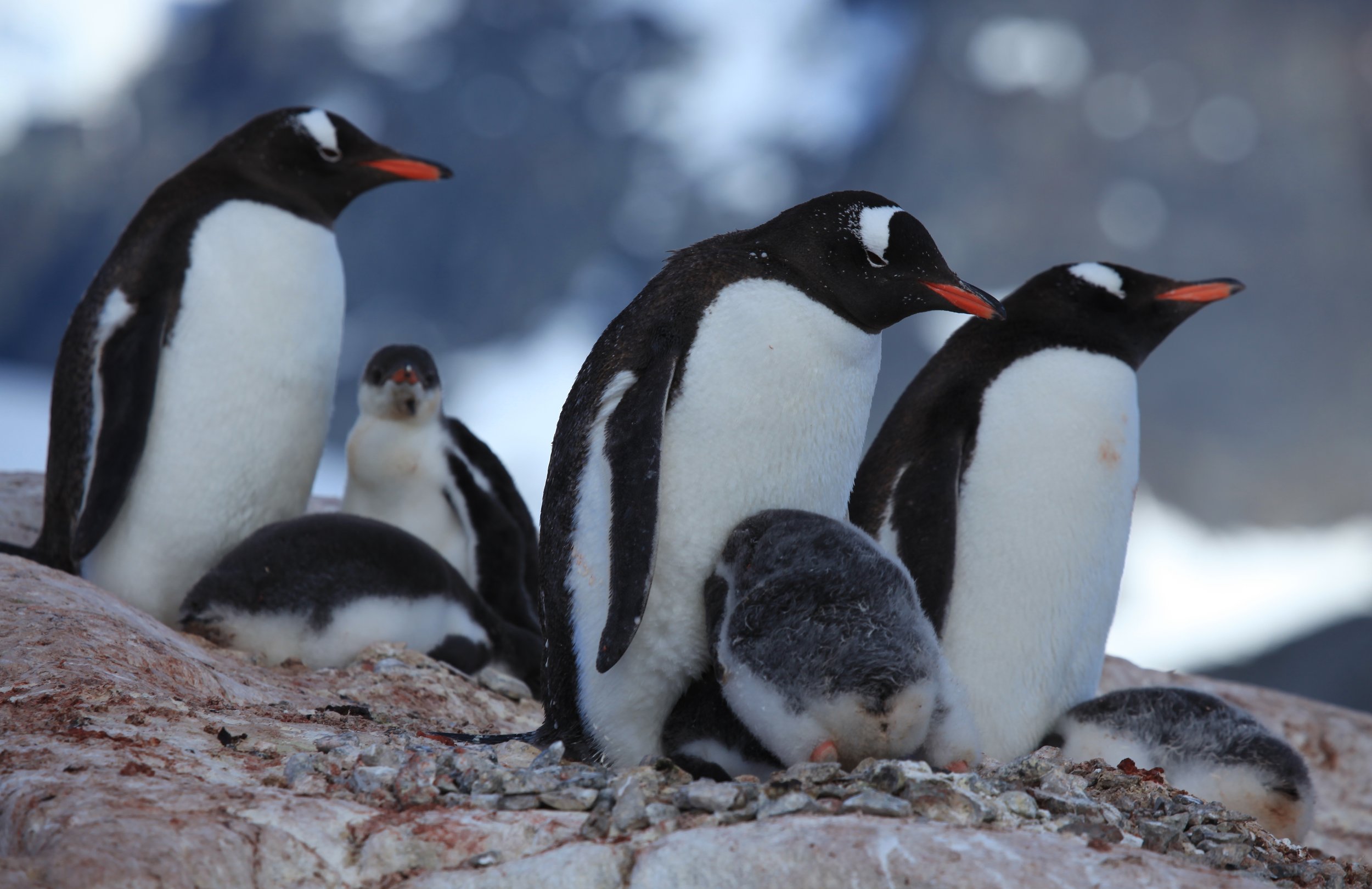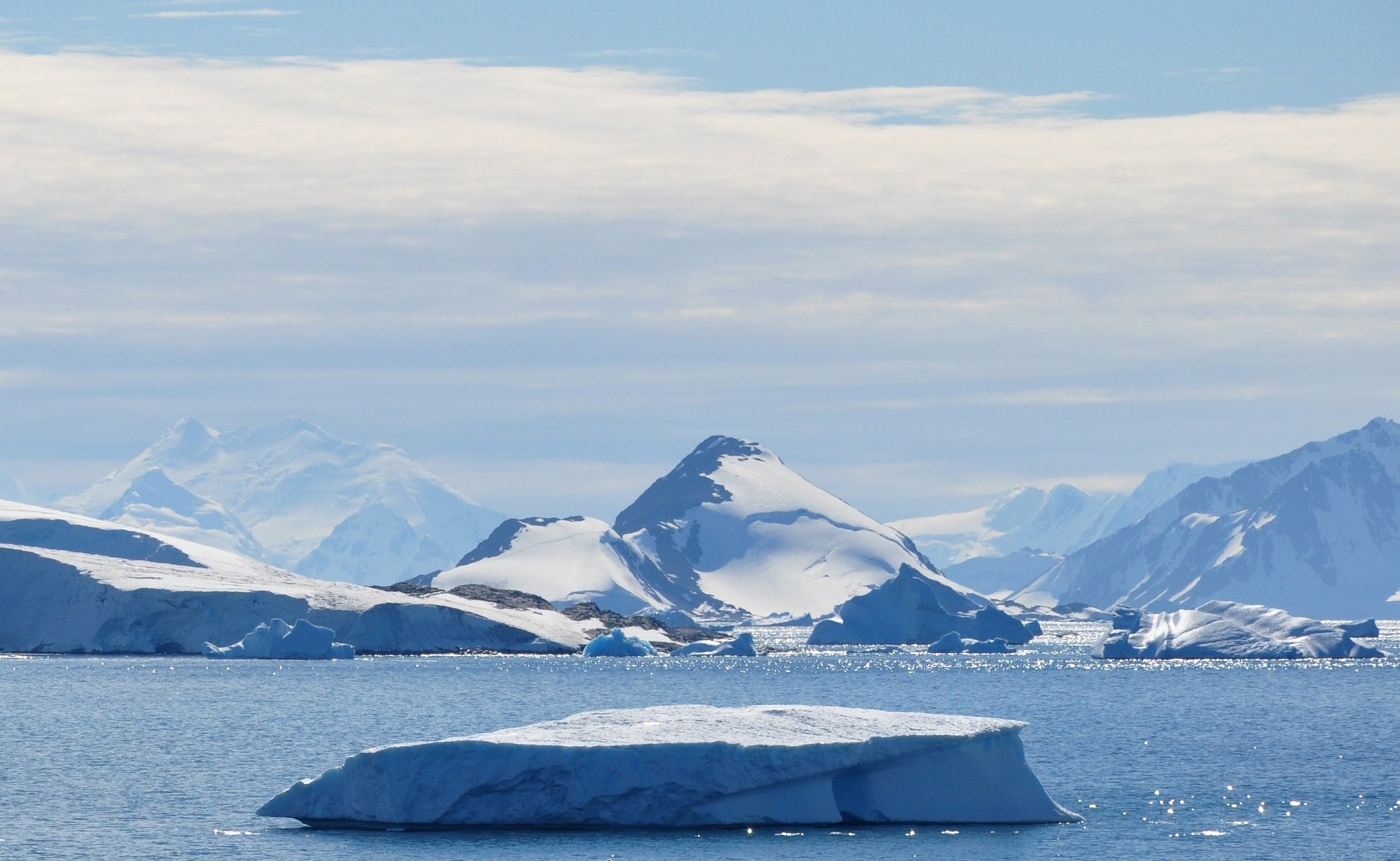Antarctica in September
For those who consider "traveling off the beaten path" a personal mantra, Antarctica stands as an irrefutable beacon of adventure. But within the vast, icy expanse of the southernmost continent, there lies a period, more precisely, the month of September, that offers an exquisite blend of wildlife encounters, shifting seasons, and unique exploratory opportunities. In this comprehensive guide, we're unpacking everything you need to know about visiting Antarctica in September — a less conventional choice, but one that may surprise you with its mosaic of experiences in the twilight of the southern summer.
Weather in Antarctica in September
September marks the start of autumn in Antarctica, signaling the beginning of a significant shift in the continent's weather patterns. From the relative mildness of the summer months, temperatures begin to plummet, and with them, daylight hours shorten. This transition phases out the breeding season for many native species, making it an interesting time to observe their behavioral shifts.
Daylight Hours
In September, the average daylight hours in Antarctica range from approximately 10-12 hours per day. This gradual decrease in sunlight can be attributed to its proximity to the Antarctic Circle, which experiences polar nights where the sun does not rise above the horizon for extended periods.
Weather Conditions
Travelers can expect temperatures to range from -4°F (-20°C) to 41°F (5°C), with conditions varying from sunny days to heavy snowfalls. The sea ice begins to expand along the coasts, creating a certain tranquility and contrast against the open ocean. While this does imply a decrease in accessibility to some locales, it also enhances the navigable experiences for those who venture here.
Challenges and Considerations for September Travel
Traveling in September can present logistical challenges, such as unpredictable weather conditions and the potential for travel delays. It's crucial to prepare for the possibility of your itinerary needing adjustments to accommodate these natural variables. However, for the dedicated traveler, these unpredictable moments can yield some of the most memorable experiences.
Logistics and Safety
Given the unpredictable weather conditions, booking your journey through a reputable tour operator specializing in Antarctic expeditions is crucial. Such operators possess the expertise and resources to adeptly modify your itinerary, ensuring safety remains paramount.
Remote Accessibility
As sea ice grows, it may render some landing sites and pathways unreachable, constraining opportunities to explore specific regions or engage in certain activities. Yet, this scenario also presents a unique advantage: fewer tourists lead to more exclusive encounters with nature and wildlife, offering a more personal and intimate experience.
Where to Go in Antarctica in September
Visiting Antarctica in September offers the chance to explore iconic destinations before they are enveloped in the full force of winter. From the Weddell Sea to Deception Island, there is a range of landscapes to experience and wildlife to encounter.
The Antarctic Peninsula
The Antarctic Peninsula serves as the initial point of interest for many travelers venturing into the icy realms of Antarctica. It's a prime spot for wildlife enthusiasts eager to catch a glimpse of penguins waddling along the shores, seals basking on floating ice, and whales breaching the chilly waters. Characterized by its rugged coastlines, which offer a dramatic backdrop to the plentiful wildlife, and towering icebergs that gleam under the polar sun, the peninsula offers a breathtaking introduction to the continent's vast landscapes and unique ecosystems. This stunning region promises an unforgettable experience, blending the thrill of adventure with the beauty of untouched nature.
Deception Island
An active volcano located in the remote waters, the caldera of Deception Island offers an otherworldly natural harbor. Surrounded by towering cliffs that guard its secrets, explorers and adventurers alike find a hidden haven for wildlife, including various species that have adapted to its unique environment. In addition to its natural wonders, Deception Island serves as a prime spot for viewing historic whaling relics, providing a glimpse into the past and the human activities that once took place there. This combination of natural beauty and history makes Deception Island a fascinating destination for those looking to explore the less trodden paths of the world.
The Weddell Sea
This remote and often inaccessible area provides a unique opportunity to witness vast colonies of emperor penguins in their natural habitat, alongside the captivating vistas of less-common pack ice and snowscapes. These landscapes narrate the tales of explorers who braved the elements long ago. Representing a true pinnacle of Antarctic isolation, this region exudes an unparalleled sense of serenity in September, when the stark beauty of the ice contrasts dramatically with the dynamic wildlife, offering a glimpse into the untouched wilderness of the Antarctic.
What to Do in Antarctica in September
Your days will be filled with activities that can only be described as unforgettable. Kayaking through crystalline waters amidst floating ice sculptures, breathing in the silent stillness of the icy desert, and witnessing penguins and seals lazing on ice floes are just a few of the standout moments.
Wildlife Spotting
September brings shifts in the behaviors of wildlife, offering unique opportunities for viewing. Penguins, seals, and whales become more active as they prepare for the coming winter. It's also the perfect time to witness penguin chicks as they fledge and several species of whales that migrate closer to the continent to feed.
Iceberg Cruising
The sea ice and expanding glaciers present an otherworldly landscape for cruising among the imposing icebergs — many calved from the continent's glaciers. They come in a myriad of shapes and a spectrum of blue hues under the right light conditions.
Historical Site Visits
The slowly emulsifying shoreline gives access to numerous historical sites, including abandoned research stations and preserved huts from the era of the great explorers. These offer windows into the human story of Antarctica.
Wildlife and Natural Phenomena
September in Antarctica sees a decrease in bird species as they start their migrations, but this period is counteracted by the chance to witness the start of the magnificent change in seasonal flora and fauna. It also heralds the approach of the winter sea ice and the myriad of biological wonders it ushers in.
Animal Migrations and Behaviors
Different species will move away from their summer habitats, and wildlife activity is high as they prepare for the long, harsh winter. It's an active time for nature enthusiasts who want to observe these changes up close.
Ice Formations and Sealife
Ice formations are at their prime for those who appreciate the artistry of nature. The growing sea ice creates passages of crystal clarity. Underneath, the submerged kelp forests house a wide array of marine life, including crustaceans, fish, and seals.
Events in Antarctica in September
Each September, research stations are busy with packing up after the summer field season, making it an interesting time to learn more about scientific expeditions and the important work carried out in this challenging environment. Special events and ceremonies might occur, offering a glimpse into both the scientific community's life and the rare social activities held in the continent.
Annual Penguin Migration Festival
September in Antarctica marks a unique period when the continent's penguin populations begin their migration to breeding grounds. This natural event has given birth to the Annual Penguin Migration Festival, where visitors can join guided tours to observe these charismatic creatures as they prepare for the breeding season. The event includes educational talks, photography workshops, and the opportunity to participate in conservation efforts, providing a deep dive into the life of Antarctica's most famous residents.
The Great Antarctic Ice Sculpture Competition
An event that celebrates the creativity and resilience of the people living and working in Antarctica, The Great Antarctic Ice Sculpture Competition takes place in various research stations across the continent. Contestants from around the world gather to carve magnificent sculptures out of ice, with themes ranging from wildlife and natural landscapes to abstract interpretations of life in one of the harshest environments on Earth. Spectators can marvel at the skill and artistry on display, making it a highlight of the Antarctic social calendar.
Southern Lights Celebration
Towards the end of September, as the darkness begins to stretch longer each day, the Southern Lights or Aurora Australis become more visible, painting the sky in vibrant hues of green, pink, and purple. The Southern Lights Celebration is an event dedicated to observing this stunning natural phenomenon. It features night-time gatherings at select viewpoints, where attendees can enjoy the celestial display along with hot beverages and talks from astronomers and scientists, explaining the science behind the auroras and their significance in polar mythology and culture.
Cultural and Historical Significance
Antarctica's cultural and historical significance is deeply intertwined with tales of exploration, human resolve, and scientific endeavor. It's a month that holds transitions — not just in weather but in the reflection of the human experience here.
Indigenous Peoples' Connections
Antarctica has a strong cultural association with indigenous peoples, who saw the continent's edges and observed its sea life long before any other groups. Their legacy is an unbroken thread connecting the ancient to modern-day conservation outlooks.
Explorers and Expeditions
From the early explorers who braved its wilderness to the expeditions of the 20th century and the continuous scientific exploration, the human story of Antarctica is one of the tenacity of the human spirit. The huts and relics they left behind are reverent monuments to curiosity and the strength of the collective human drive to understand our world.
Environmental Conservation Efforts
Antarctica is a globally significant environment, and conservation efforts are paramount. For visitors, understanding the fragility and uniqueness of the region is crucial, as is knowing how to minimize your footprint.
The presence of humans has an enduring impact, and visitors can support preservation by choosing eco-friendly travel options and by being knowledgeable about sustainable practices and policies that are in place.
Practical Advice for Visitors
Visiting Antarctica demands a systematic and thoughtful approach to preparation due to its extreme and remote environment. First and foremost, familiarize yourself with the specific regulations in place to protect its pristine ecosystem. Packing is another critical step; ensure you have the right gear for extremely cold weather, including thermal layers, waterproof outerwear, and UV protection sunglasses. Given the continent's isolation, prepare for very limited access to amenities you might take for granted elsewhere, such as easy communication with the outside world. Also, brace yourself for the unexpected – weather can change swiftly, and you may encounter challenges that test your resilience. Most importantly, it's essential to ensure that you're mentally and physically prepared for what truly is the adventure of a lifetime, with unique challenges but also unparalleled rewards in witnessing the untouched beauty of Antarctica.
Conclusion
Antarctica in September is a less-trodden path, filled with shifting landscapes, significant fauna interactions, and a sense of the impending change that only the transition from one season to the next can bring. For intrepid explorers seeking a once-in-a-lifetime experience in an environment like no other, this is the time to set sail to a realm where nature reigns supreme. It's a time of the year that balances the last of summer's light with the surge of winter's coming might, encapsulating the delicate balance of life and seasonal rotation. In every sense, it is a frozen world that awaits discovery, and for those with the spirit to venture, September is the gateway to an Antarctic odyssey that will stay etched in the soul.
Interested in visiting Antarctica in another month? Check out our other guides below:



























